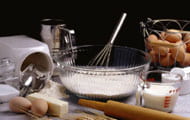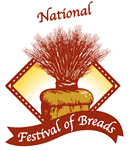 There are several types of yeast to use when making a tasty yeast bread. One that is available to professional bakers is a special strain of yeast that requires less water to do its job. Some yeast bread recipes are high in sugar, low in moisture, and can take longer to rise. The sugar will trap the water which makes it unavailable for the yeast to use.
There are several types of yeast to use when making a tasty yeast bread. One that is available to professional bakers is a special strain of yeast that requires less water to do its job. Some yeast bread recipes are high in sugar, low in moisture, and can take longer to rise. The sugar will trap the water which makes it unavailable for the yeast to use.
A special strain of instant yeast, called “osmotolerant,” can help. Osmosis is the phenomenon that helps move water through the cell walls of yeast. In a rich sweet dough, the yeast competes for protein, starch, and sugar to get any water it can. Osmotolerant yeast resists this competition to get to the water and help dough to rise. When compared to active dry yeast, these doughs will use less osmotolerant yeast to get good results.
Source: Understanding Baking, 3rd edition, Joseph Amendola and Nicole Rees






